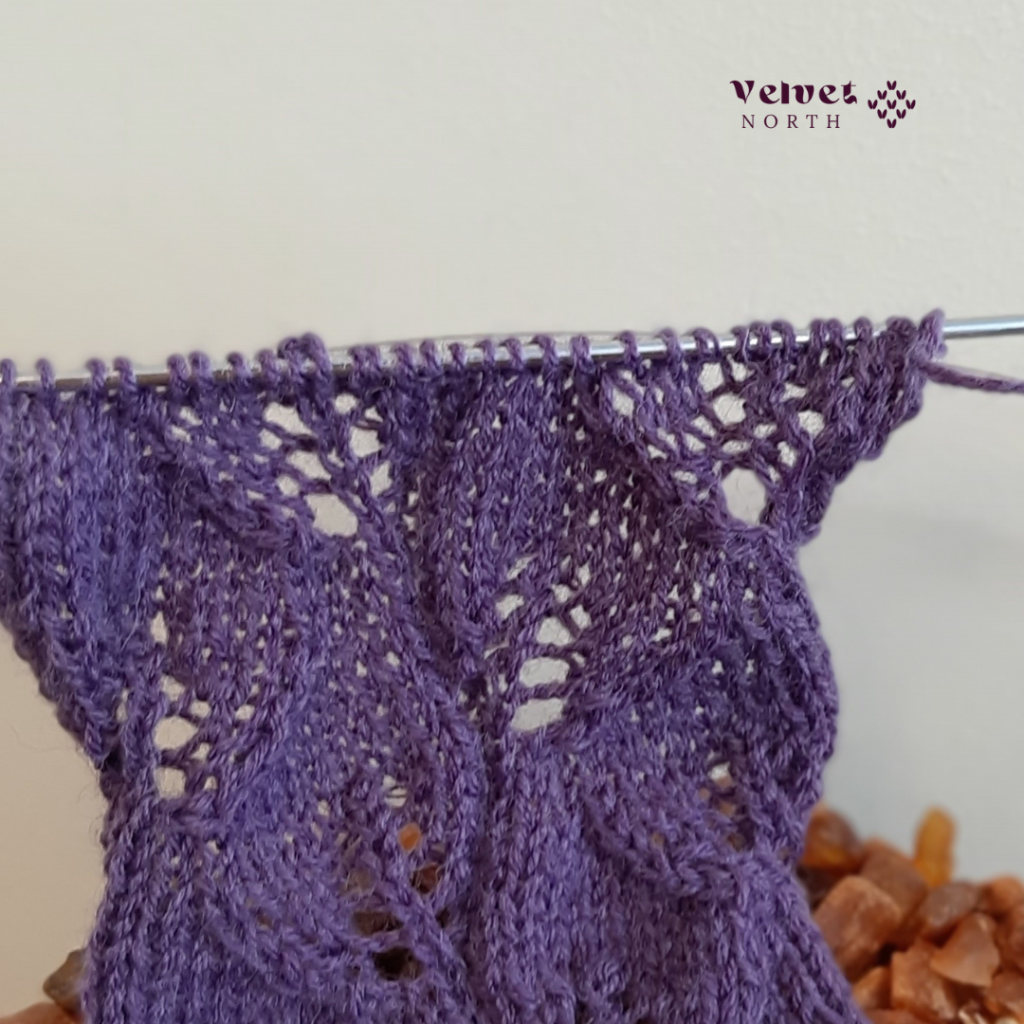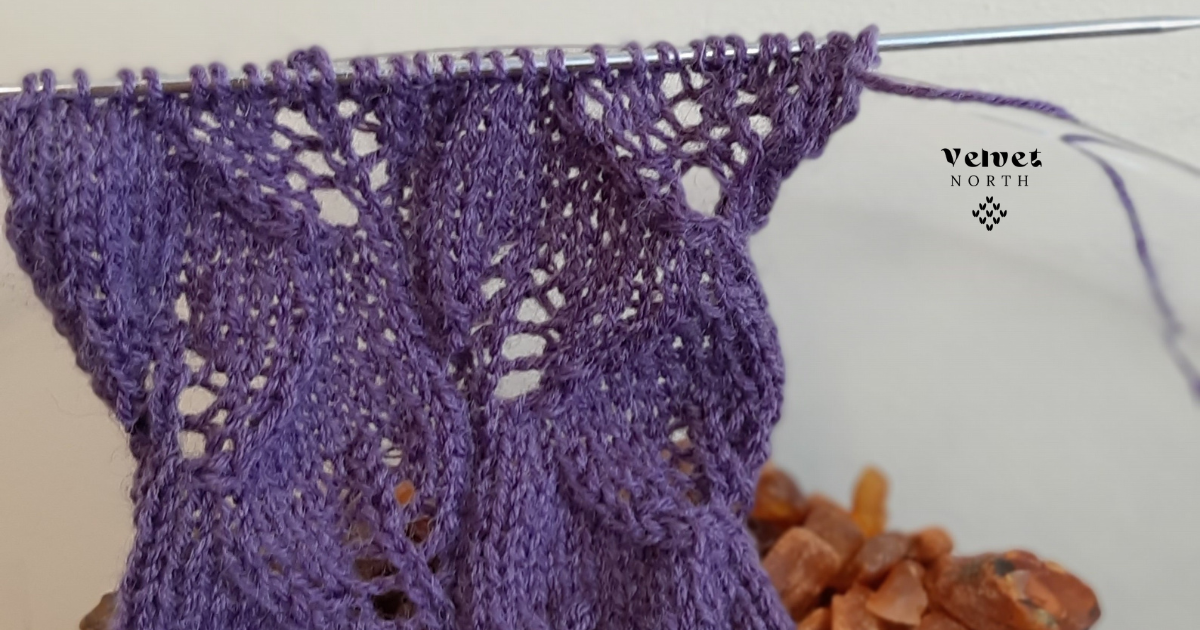- May 25, 2023
- Velvet North
- 0 Comments
- Tutorials
The overlapping leaves stitch is a beautiful and intricate knitting pattern that is perfect for adding texture and interest to any knitting project. This stitch pattern is inspired by the natural beauty of leaves and is created by knitting clusters of stitches that overlap each other, creating the appearance of overlapping leaves.
The overlapping leaves stitch pattern is worked over a multiple of s15 stitches (plus 2), and requires only basic knitting techniques such as knit, purl, yarn over, and slip slip knit. The pattern is typically worked over a background of garter stitch or stockinette stitch, which provides a nice contrast to the textured leaf clusters.
To get started with the overlapping leaves stitch pattern, you will need a knitting needle and yarn in the weight of your choice. You can use any type of yarn, but a smooth, solid-colored yarn will show off the leaf pattern the best.
Here is a basic overlapping leaves stitch pattern:
The written instructions for the overlapping leaves stitch pattern may seem a bit confusing at first, but once you get the hang of it, it will become second nature. The key is to pay close attention to the stitch markers and to keep track of where you are in the pattern.

Table of Contents
ToggleAbbreviations
RS, WS: Right side, wrong side
ST, STS: Stitch, stitches
K: Knit
P: Purl
Yo: Yarn over
SSK: Slip slip knit
SSP: Slip slip purl
K2tog: Knit 2 stitches together
P2tog: Purl 2 stitches together
Overlapping leaves stitch knitting pattern

KNITTED FLAT ON STRAIGHT NEEDLES. Start at front of work (rs)
Cast on a multiple of 15 sts, plus 2.
Row 1 (RS): P2, *K13, P2; rep from * to end.
Row 2 ((WS): K2, *P13, K2; rep from * to end.
Row 3: P2, *K10, K2tog, Yo, K1, P2; rep from * to end.
Row 4: K2, *Yo, P2, P2tog, P9, K2; rep from * to end.
Row 5: P2, *K8, K2tog, K1, Yo, K2, P2; rep from * to end.
Row 6: K2, *P1, Yo, P3, P2tog, P7, K2; rep from * to end.
Row 7: P2, *K6, K2tog, K2, Yo, K3, P2; rep from * to end.
Row 8: K2, *P2, Yo, P4, P2tog, P5, K2; rep from * to end.
Row 9: P2, *K4, K2tog, K3, Yo, K4, P2; rep from * to end.
Row 10: K2, *P3, Yo, P5, P2tog, P3, K2; rep from * to end
Row 11: P2, *K13, P2; rep from * to end.
Row 12: K2, *P13, K2; rep from * to end.
Row 13: P2, *K1, Yo, SSK, K10, P2; rep from * to end.
Row 14: K2, *P9, SSP, P2, Yo, K2; rep from * to end.
Row 15: P2, *K2, Yo, K1, SSK, K8, P2; rep from * to end.
Row 16: K2, *P7, SSP, P3, Yo, P1, K2; rep from * to end.
Row 17: P2, *K3, Yo, K2, SSK, K6, P2; rep from * to end.
Row 18: K2, *P5, SSP, P4, Yo, P2, K2; rep from * to end.
Row 19: P2, *K4, Yo, K3, SSK, K4, P2; rep from * to end.
Row 20: K2, *P3, SSP, P5, Yo, P3, K2; rep from * to end.
Rep Rows 1 – 20.
Looking for a new and unique stitch to add to your knitting repertoire? Look no further than the leaf stitch. This beautiful stitch is perfect for creating texture and visual interest in any knitting project. However, while the traditional leaf stitch is lovely, there are many variations that can be used to create a different look. That’s why we’ve put together a blog post on our favorite alternative designs for the leaf stitch. Whether you’re looking for a lacey twist on the classic leaf or a bolder, more graphic pattern, our post has something for every knitting style. So, pull out your needles and check out our post to add some new excitement to your knitting!

